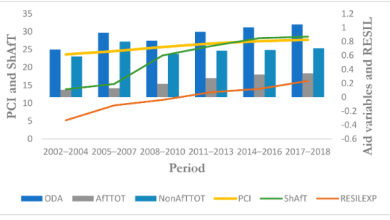Point Cloud to BIM: How 3D Laser Scanning Revolutionizes As-Built Surveys
In recent years, the AEC (Architecture, Engineering, and Construction) industry has witnessed a significant technological advancement that has revolutionized the way as-built surveys are conducted. 3D Laser Scanning, also known as LiDAR (Light Detection and Ranging), has emerged as a game-changing technology, enabling professionals to capture accurate and detailed data of existing buildings and structures. This data is then converted into Point Clouds, which serve as the foundation for Building Information Modeling (BIM). In this blog, we will explore the transformational power of 3D laser scanning and how it is reshaping as-built surveys.
Understanding 3D Laser Scanning
What is 3D Laser Scanning?
3D laser scanning is a non-contact surveying technology that employs laser beams to measure the distance and capture detailed information about the surfaces of objects or structures. By rapidly scanning the target area, it creates a point cloud, which is a vast collection of individual data points in a 3D coordinate system.
How Does 3D Laser Scanning Work?
The 3D laser scanner emits laser pulses, and the time it takes for the pulses to bounce back to the scanner’s sensor is measured. This data is then combined with the angle of the laser beam to calculate the distance between the scanner and the object’s surface. The scanner performs millions of such measurements in a matter of seconds, creating a dense and accurate point cloud representation of the scanned environment.
Advantages of 3D Laser Scanning for As-Built Surveys
Unparalleled Accuracy and Detail
One of the most significant advantages of 3D laser scanning is its exceptional level of accuracy and detail. Traditional surveying methods may overlook minor deviations, but laser scanning captures every nuance and irregularity of the existing structure, ensuring precise data for the creation of BIM models.
Time and Cost Efficiency
Compared to conventional surveying techniques that can be time-consuming and labor-intensive, 3D laser scanning expedites the data collection process. As a result, project teams save valuable time and reduce overall surveying costs.
Non-Intrusive Data Collection
Since 3D laser scanning is a non-contact technology, it eliminates the need for physical contact with the structure being surveyed. This aspect is particularly advantageous when dealing with delicate or historically significant buildings, as it helps preserve their integrity during the surveying process.
Increased Safety
By reducing the need for manual measurements taken at heights or hazardous locations, 3D laser scanning enhances safety on-site, mitigating the risk of accidents and injuries for surveyors and construction personnel.
From Point Cloud to BIM: The Workflow
Data Acquisition and Point Cloud Generation
The first step in the transformation of as-built surveys is the 3D laser scanning process. Highly skilled surveyors operate the laser scanner, capturing the entire building’s geometry and surroundings. The data collected is then processed to create a comprehensive point cloud representation of the scanned area.
Point Cloud Registration and Alignment
In cases where the building is extensive or intricate, multiple scans may be required to cover the entire site. These individual point clouds are then aligned and registered to form a single, unified point cloud, representing the complete structure accurately.
Data Cleanup and Filtering
Raw point cloud data can be dense and contain some noise or outliers. During data cleanup and filtering, unnecessary points and noise are removed, ensuring that only accurate and relevant data remains.
Model Generation and BIM Integration
The refined point cloud data serves as the foundation for BIM modeling. Using specialized software, the point cloud is converted into a 3D BIM model. This model can be further enriched with additional information, such as materials, utilities, and systems.
Applications of Point Cloud to BIM
Renovation and Retrofitting Projects
Point Cloud to BIM technology is particularly beneficial for renovation and retrofitting projects. The highly accurate as-built data helps architects and engineers make informed decisions, anticipate challenges, and plan modifications with precision.
Clash Detection and Coordination
In complex construction projects, various building elements need to fit together seamlessly. Point Cloud to BIM enables clash detection and coordination, identifying potential conflicts early in the design phase and minimizing costly revisions during construction.
Facility Management and Maintenance
After construction, the BIM model derived from point cloud data becomes an invaluable resource for facility management and maintenance. Building owners and operators can access comprehensive information about the building’s structure and systems, facilitating efficient maintenance and operational planning.
Conclusion
3D laser scanning and the transformation of point cloud data to BIM have significantly changed the landscape of as-built surveys in the AEC industry. The unparalleled accuracy, time efficiency, and safety improvements offered by this technology have made it an indispensable tool for architects, engineers, and construction professionals. As the adoption of Point Cloud to BIM continues to grow, it promises to reshape the way we approach existing building documentation and construction projects, ushering in a new era of efficiency and innovation in the built One of the most remarkable benefits of 3D laser scanning and Point Cloud to BIM technology is its ability to capture intricate details of existing structures with unparalleled accuracy.
Also Read: The Art of Turning Point Cloud Data into Intelligent BIM Models




